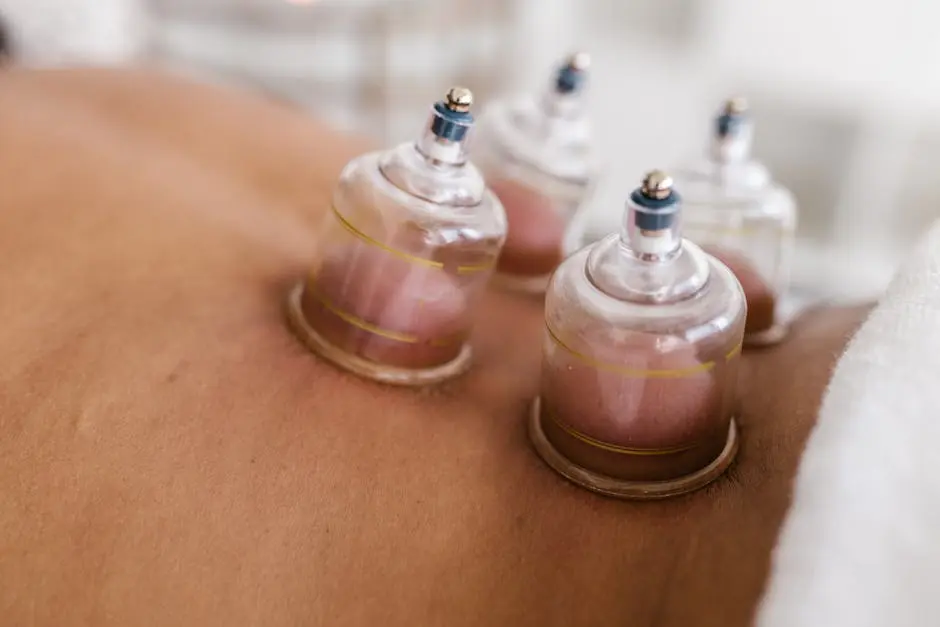Cupping therapy is gaining popularity among athletes, and for good reason! Not only does it offer unique recovery benefits, but it also enhances performance in unexpected ways. In this post, we’ll explore the surprising advantages of integrating cupping therapy into your athletic routine. Whether you’re a seasoned pro or just starting out, these insights might inspire you to give it a try!
1. Enhanced Muscle Recovery
Cupping promotes blood flow and helps in reducing muscle soreness, making it a powerful tool for recovery after intense workouts. The suction created by the cups draws blood to the area, which not only aids in the healing process but also delivers essential nutrients to tired muscles. This can be especially beneficial after rigorous training sessions, as it accelerates the body’s natural recovery mechanisms and cuts down on downtime between workouts.
Some athletes have found that incorporating cupping into their post-workout routine allows them to push harder during training without fearing the typical aches and pains that usually accompany heavy physical exertion. Research suggests that athletes who utilize cupping may experience less muscle fatigue and soreness, thus allowing them to maintain higher levels of performance over time. Additionally, the psychological aspect of feeling rejuvenated can also enhance overall motivation and performance.
2. Pain Relief and Relaxation
By stimulating the skin and underlying tissues, cupping can alleviate pain and promote a sense of deep relaxation for athletes. This therapy works by creating a vacuum effect that pulls the skin and shallow muscles upward, promoting circulation and encouraging the release of muscle tightness. It’s like sending a wave of calm over your body after a hard workout.
Many athletes report experiencing significant relief from chronic pain conditions, such as tennis elbow or runner’s knee, after regular cupping sessions. Moreover, the relaxation it provides is not merely physical; it can also have profound psychological effects. Feeling relaxed can help athletes clear their minds, allowing them to focus better and eliminate distractions before a competition. This added mental clarity could be just as beneficial for performance as the physical benefits.
3. Increased Range of Motion
Cupping therapy can help release tension in tight muscles, leading to improved flexibility and a greater range of motion for athletes. Enhanced flexibility is crucial for athletes across all sports, whether you’re making a high kick in martial arts or swinging a racket in tennis. When muscles are pliable and relaxed, the body moves more efficiently, minimizing the risk of injury.
Athletes who struggle with limited flexibility may find cupping particularly beneficial, as it directly addresses tight areas in the body. Following a cupping session, many report feeling looser and more agile, making it easier to perform at their best. Additionally, the cumulative effect of regular sessions can maintain that newfound flexibility, preventing the body from tightening up again and ensuring that the gains are long-lasting.
4. Reduced Inflammation
This therapy encourages circulation and can help to decrease inflammation, which is beneficial for various athletic injuries. Inflammation is often a significant hurdle in an athlete’s journey, as it can lead to prolonged recovery times and deter progress. Cupping can effectively combat inflammation by enhancing blood flow to injured areas, promoting quicker and more efficient recovery.
For athletes dealing with injuries, such as sprains or strains, cupping may offer a non-invasive solution to tackle swelling and discomfort. The release of pressure in the muscles allows the body to heal itself more effectively. Many professional athletes have begun to integrate cupping into their regular treatment protocols, showcasing its beneficial impact on both injury recovery and prevention.
5. Improved Circulation
Cupping boosts blood flow to the affected areas, promoting quicker healing and enhancing athletic performance. Improved circulation ensures that vital oxygen and nutrients reach muscle tissues efficiently, enabling them to recover faster between workouts. When circulation is enhanced, not only do muscles feel better, but they also have greater endurance during strenuous activities.
Athletes training at high intensities can particularly benefit from cupping as it aids in flushing out toxins and metabolic waste products that accumulate during exercise. Preventing excessive buildup of these substances is critical in maintaining peak performance levels. Ultimately, better circulation leads to improved stamina and less fatigue, allowing for more effective training sessions and competitions.
6. Mental Clarity and Focus
The relaxation experienced through cupping can aid in mental clarity, allowing athletes to focus better during their performance. Clearing the mind of distractions is vital for optimal performance in high-stakes situations. The calming effects of cupping can help diminish racing thoughts and anxiety, positioning athletes to perform at their best.
This is especially important in sports that require immense concentration, such as archery or gymnastics. Athletes often need to be in a specific mental space, where they’re fully present and not bogged down by outside pressures. Cupping not only serves the body but also trains the mind, maximizing performance potential.
7. Support for Respiratory Function
Cupping can enhance lung function and support respiratory health, which is vital for endurance athletes. By applying cups to the back, the therapy can stimulate the lungs, promoting deeper breathing and improved oxygen intake. This is essential for athletes engaged in endurance sports like running, cycling, and swimming.
Enhanced respiratory function means athletes can sustain higher levels of performance and endure longer workouts. When the body has more oxygen flowing through, it can work more efficiently, which is what every athlete strives for. Given the increasing prevalence of respiratory issues, especially among athletes, cupping presents a promising avenue for not only maintaining endurance but also enhancing it significantly.





